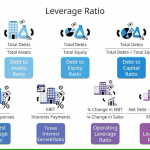Are SPACs a silver bullet for companies looking to go public? Are IPOs the only tried and true method? In the world of investment and finance, there are many myths swirling around Special Purpose Acquisition Companies (SPACs) and Initial Public Offerings (IPOs). Understanding the truth behind these myths is essential for both investors and companies considering their options.
In this article, we aim to debunk common misconceptions about SPACs and IPOs. We’ll explore the advantages and disadvantages of each, shedding light on the real potential and risks involved. By separating fact from fiction, readers will gain a clearer understanding of these financing options and be better equipped to make informed decisions.
From the boom in SPAC activity in recent years to the enduring popularity of IPOs, we’ll dive deep into the key aspects that differentiate these two methods of going public. Along the way, we’ll address common questions and concerns, providing an objective analysis of the pros and cons of each approach.
Join us as we demystify the world of SPACs and IPOs, allowing you to navigate the complex landscape with confidence and clarity.
What is a SPAC?
A Special Purpose Acquisition Company (SPAC) is a publicly-traded company created with the sole purpose of merging with or acquiring an existing private company, thereby taking it public.
SPACs raise capital through an initial public offering (IPO) and the funds are placed in a trust until a suitable target company is identified. Once a target company is chosen, the SPAC merges with it, allowing the target company to become publicly traded without going through the traditional IPO process.

SPACs offer several advantages for companies looking to go public. Firstly, the process is generally faster compared to the traditional IPO route. Since the SPAC is already a publicly-traded entity, the target company can bypass the lengthy process of filing with the SEC and conducting roadshows.
Additionally, SPACs allow companies to negotiate the terms of the merger privately, which can be appealing for companies that value confidentiality.
However, it is important to note that not all SPACs are successful. Investors should carefully evaluate the track record and expertise of the SPAC sponsors, as well as the financial projections and potential risks associated with the target company. As with any investment, thorough due diligence is crucial.
What is an IPO?
An Initial Public Offering (IPO) is the process by which a private company offers its shares to the public for the first time, thereby becoming a publicly traded company. In an IPO, the company works with underwriters to determine the offering price, issue shares to the public, and list the shares on a stock exchange.
IPOs have long been considered the traditional and prestigious method of going public. Companies often choose this route to raise capital, increase brand visibility, and provide liquidity to existing shareholders. IPOs can attract a wide range of investors, including institutional investors and retail investors, which can result in increased market liquidity and shareholder base.
However, IPOs come with their own set of challenges. The process can be time-consuming and expensive, requiring extensive regulatory filings, due diligence, and coordination with underwriters.
Additionally, the company’s valuation may be subject to market conditions, which can impact the offering price and subsequent trading performance. IPOs also require the company to disclose detailed financial information, which may not be desirable for companies that value privacy.
Key Differences between SPACs and IPOs
While both SPACs and IPOs provide a pathway for companies to go public, there are key differences that set them apart. Understanding these differences is crucial for companies and investors considering their options.
Timing and Speed: SPACs are generally faster compared to IPOs. Since the SPAC is already a publicly-traded entity, the target company can go public in a matter of months, bypassing the lengthy IPO process. IPOs, on the other hand, require extensive preparation, regulatory filings, and coordination with underwriters, which can take several months or even longer.
Confidentiality and Negotiation: SPACs offer companies the advantage of negotiating the terms of the merger privately. This can be appealing for companies that value confidentiality or have specific requirements. IPOs, on the other hand, involve extensive disclosure of financial information and negotiations with underwriters, which are conducted in a more public manner.
Capital Structure: SPACs raise capital through an IPO and the funds are placed in a trust until a suitable target company is identified. In an IPO, the company directly offers its shares to the public and raises capital based on the demand for its shares. The capital structure of SPACs and IPOs differ, and companies may choose one over the other based on their specific capital needs.
Common Myths about SPACs
Despite the increasing popularity of SPACs, there are several common myths that persist. Let’s debunk some of these myths and separate fact from fiction.
Debunking Myth #1: SPACs are a shortcut to going public
One common misconception about SPACs is that they provide a shortcut to going public. While it is true that SPACs can offer a faster route compared to traditional IPOs, they still require thorough due diligence and compliance with regulatory requirements. The target company must meet certain criteria and undergo a rigorous evaluation process to ensure it is a suitable candidate for a merger. SPACs are not a guaranteed shortcut to going public without meeting the necessary requirements.
Debunking Myth #2: SPACs are riskier than IPOs
Another myth surrounding SPACs is that they are inherently riskier than IPOs. While it is true that SPACs come with their own set of risks, such as the uncertainty of finding a suitable target company and the potential for dilution of shares, it is important to note that IPOs also come with risks. The success of an IPO depends on various factors, including market conditions, investor sentiment, and the company’s financial performance. Both SPACs and IPOs carry risks, and investors should carefully evaluate the specific risks associated with each option.
Debunking Myth #3: SPACs are only for tech companies
There is a common misconception that SPACs are only suitable for tech companies. While it is true that there have been notable tech companies that have gone public through SPAC mergers, such as Virgin Galactic and DraftKings, SPACs are not limited to the tech sector. SPACs can be used by companies from a wide range of industries, including healthcare, consumer goods, and energy. The suitability of a SPAC merger depends on various factors, including the target company’s growth prospects, market conditions, and investor demand.
Debunking Myth #4: SPACs Guarantee Automatic Returns
Another prevalent myth is that investing in SPACs guarantees automatic returns. While some SPACs may experience price appreciation upon announcing a merger target, not all SPAC investments result in immediate profits. Investors should exercise caution and conduct thorough due diligence to assess the long-term potential and risks associated with each SPAC investment opportunity.
Debunking Myth #5: SPAC Sponsors Always Have Investors’ Best Interests
There is a misconception that SPAC sponsors always act in the best interests of investors. While SPAC sponsors play a critical role in identifying and acquiring a target company, investors should carefully evaluate the sponsor’s track record, incentives, and alignment with shareholder interests. It’s important for investors to scrutinize the sponsor’s financial commitment, expertise, and the terms of the SPAC’s structure to ensure alignment with their investment objectives.
Debunking Myth #6: All SPAC Mergers Are Lucrative
There is a misconception that all SPAC mergers lead to lucrative outcomes for investors. While some SPAC mergers result in successful value creation, others may face challenges in integrating the acquired company or meeting growth expectations. Investors should approach SPAC mergers with a discerning mindset, evaluating the target company’s fundamentals, growth prospects, and the post-merger business strategy to make informed investment decisions.
Common Myths about IPOs
In addition to the myths surrounding SPACs, there are also common misconceptions about IPOs. Let’s debunk some of these myths and provide a clearer understanding of the IPO process.
Debunking Myth #1: IPOs are only for large companies
One myth surrounding IPOs is that they are only suitable for large, well-established companies. While it is true that many high-profile IPOs involve large companies, IPOs are not limited to them. Companies of all sizes, including startups and mid-sized businesses, can go public through an IPO. The decision to pursue an IPO depends on various factors, including the company’s growth prospects, capital needs, and strategic objectives.
Debunking Myth #2: IPOs guarantee success and profitability
Another common myth is that IPOs guarantee success and profitability for the company and its investors. While going public can provide opportunities for growth and access to capital, it does not guarantee success. The success of an IPO depends on various factors, including market conditions, investor sentiment, and the company’s financial performance. Additionally, the performance of a company’s stock after the IPO is subject to market forces and investor demand.
Debunking Myth #3: IPOs are the only way to raise capital
Contrary to popular belief, IPOs are not the only way for companies to raise capital. There are alternative methods of financing, such as private equity funding, venture capital investments, and debt financing. Each method has its own advantages and considerations, and companies should carefully evaluate their options based on their specific capital needs, growth prospects, and risk tolerance. IPOs are one avenue for accessing capital, but they are not the only option.
Debunking Myth #4: Only Institutional Investors Can Participate in IPOs
There is a common belief that only institutional investors have access to IPO shares, and individual retail investors are left out. In reality, many IPOs allocate a portion of the shares to retail investors through brokerage firms. Retail investors can participate in IPOs by working with their brokerage to place orders for shares at the offering price.
Debunking Myth #5: All IPOs Are High-Risk Investments
While it’s true that investing in IPOs carries inherent risks, not all IPOs are high-risk investments. Some companies going public have a strong track record, solid financials, and a clear growth strategy, making them potentially attractive investment opportunities. It’s important for investors to evaluate the fundamentals of the company and its prospects before making investment decisions.
Debunking Myth #6: IPOs Always Lead to Short-Term Gains
Another common misconception is that IPOs always result in short-term gains for investors. While some IPOs experience an initial surge in stock price, others may face volatility and price fluctuations in the early months of trading. Investors should be prepared for the possibility of short-term price fluctuations and have a long-term investment perspective.
Debunking Myth #7: All IPOs Are Overvalued
There is a perception that all IPOs are overvalued, leading to concerns about inflated stock prices and potential market corrections. While some IPOs may be overvalued, it’s not a blanket statement that applies to all companies going public. Each IPO should be evaluated based on its unique fundamentals, industry dynamics, and market conditions.
Key Considerations for Investors Before Investing in IPOs and SPACs
Before investing in Initial Public Offerings (IPOs) and Special Purpose Acquisition Companies (SPACs), investors should carefully consider various factors to make informed investment decisions.
Both IPOs and SPACs offer opportunities for investors to participate in the early stages of a company’s growth or in a merger or acquisition process, but they also come with unique risks and considerations. Here are some key factors that investors should take into account before investing in IPOs and SPACs.

Company Fundamentals and Business Model
When evaluating an IPO or SPAC investment opportunity, investors should thoroughly analyze the company’s fundamentals, including its business model, revenue generation, competitive advantages, and growth prospects. Understanding the underlying business and industry dynamics is essential to assess the long-term potential of the investment.
Management Team and Track Record
The management team plays a crucial role in the success of a company, especially in the case of SPACs where the management team is responsible for identifying a target company for acquisition. Investors should assess the experience, expertise, and track record of the management team to gauge their ability to execute the company’s strategic vision and create value for shareholders.
Regulatory and Compliance Considerations
IPOs and SPACs are subject to regulatory requirements and compliance standards set by regulatory bodies such as the Securities and Exchange Commission (SEC). Investors should review the regulatory filings, prospectus, and offering documents to understand the company’s compliance with securities laws, potential risks, and any regulatory hurdles that could impact the investment.
Market Conditions and Valuation
Assessing the prevailing market conditions and valuation metrics is essential for determining the attractiveness of an IPO or SPAC investment. Investors should consider factors such as market volatility, industry trends, comparable company valuations, and the offering price to evaluate whether the investment opportunity aligns with their risk-return objectives.
Lock-Up Periods and Share Dilution
In the case of IPOs, investors should be aware of any lock-up periods during which insiders and early investors are restricted from selling their shares. Additionally, understanding the potential impact of share dilution from additional stock offerings or the conversion of warrants in SPACs is important for assessing the long-term implications on shareholder value.
Due Diligence and Professional Advice
Conducting thorough due diligence and seeking professional advice from financial advisors, legal experts, and industry analysts can provide valuable insights and mitigate investment risks. Investors should research the company’s financial statements, market positioning, competitive landscape, and industry trends to make informed investment decisions.
Investing in IPOs and SPACs can offer unique opportunities for investors to participate in the growth of emerging companies and potential merger transactions. However, these investments also carry inherent risks and complexities that require careful consideration.
By evaluating the company fundamentals, management team, regulatory compliance, market conditions, and seeking professional advice, investors can make informed decisions and navigate the IPO and SPAC landscape with greater confidence and clarity.
Conclusion
In conclusion, it is important to separate fact from fiction when it comes to SPACs and IPOs. Both methods of going public have their advantages and disadvantages, and companies and investors should carefully evaluate their options based on their specific needs and objectives.
SPACs offer a faster route to going public and provide confidentiality in negotiations, while IPOs offer prestige, increased visibility, and access to a wide range of investors.
However, both SPACs and IPOs come with their own set of risks and considerations. Thorough due diligence, careful evaluation of the target company or market conditions, and expert advice are essential for making informed decisions. By debunking common myths and understanding the realities of SPACs and IPOs, companies and investors can navigate the complex landscape with confidence and clarity.






